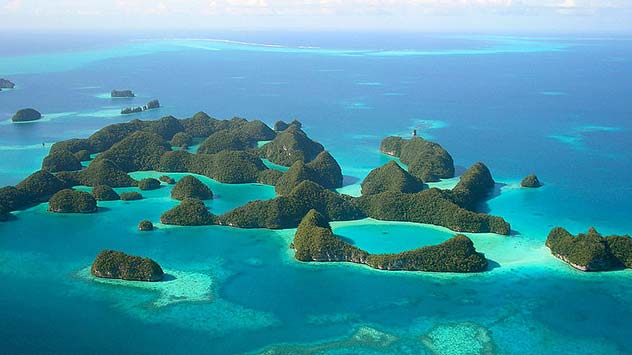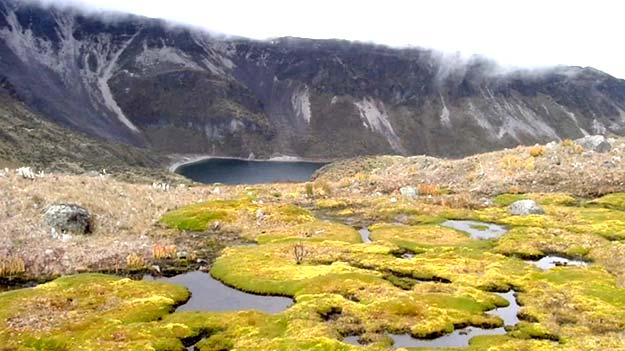In the Andes mountains of Colombia, Ecuador, Peru, and Venezuela, tucked between the tree line and the line of permanent snow, is the páramo, a unique and hauntingly beautiful mountainous wetland that is threatened by climate change and growing temperature extremes.
The páramo of the Northern Andes is wet and cold. Temperatures can dip below freezing at night and soar above 60 degrees Farenheit during the day. But Daniel Ruiz Carrascal doesn’t mind the extremes. He goes back to this ecosystem any chance he gets, to study how the environment is changing.
“Unfortunately, in the high-altitude ecosystems of the Andes, climate change is already underway,” says Ruiz, a graduate research assistant at the International Research Institute for Climate and Society, and an associate professor at the School of Engineering in Antioquia, Colombia. “We’ve already seen higher temperatures, increased evaporation and less snow relative to rainfall. This warmer and drier climate stresses plants and forces fauna and flora species to climb to higher ground. If the changes continue, some species could become extinct.”
“ The páramo is the primary water source for the Andean lowlands. It acts as a spongy holding area for glacial meltwater, steadily releasing throughout the dry season.”
Ruiz and his research colleagues in Colombia have monitored the páramo ecosystems since 2004, measuring changes in air circulation patterns, biodiversity, the number of wildfires, and surface water supply.
The páramo is home to nearly 5,000 plant species. More than 3,000 exist nowhere else on the planet. They have evolved the ability to withstand strong winds, dramatic temperature changes, low atmospheric pressure, and intense ultraviolet radiation. Uniquely adapted to these conditions, these species are highly vulnerable to climatic change.
But species extinction isn’t the only concern. The páramo is the primary water source for the Andean lowlands. It acts as a spongy holding area for meltwater that flows from the glaciers above, steadily releasing it over the three-month dry seasons. The cities of Quito, Ecuador and Bogotá, Colombia, for example – home to nearly ten million people–depend on the páramo’s water for drinking water, irrigation, hydropower and manufacturing.
Climate change threatens these Andean communities because it is causing glaciers and high altitude water bodies to disappear and it may be drying out the páramo, reducing its water-storage capacity. At the same time, population pressure and water demand continue to rise. Anticipating changes to water availability will be a critical part of municipal planning and climate adaptation efforts. But first, researchers will need to understand the changes taking place in the páramo.
Recently, Ruiz’s team has expanded to include Laia Andreu, a scientist at the Tree-Ring Lab of Columbia University’s Lamont-Doherty Earth Observatory. They will analyze certain plant species in the páramo to try to unlock secrets about its climatic history. Combined with ongoing monitoring data, this will help shed light on changes we can expect in the future in this delicate and crucial ecosystem.
FROM | www.trust.org
Source: http://www.bluechannel24.com
Dear User/Visitor! Please, answer on our questions: tick off one of the positions – your answer will make us able to improve our site and make it more interesting and useful!



